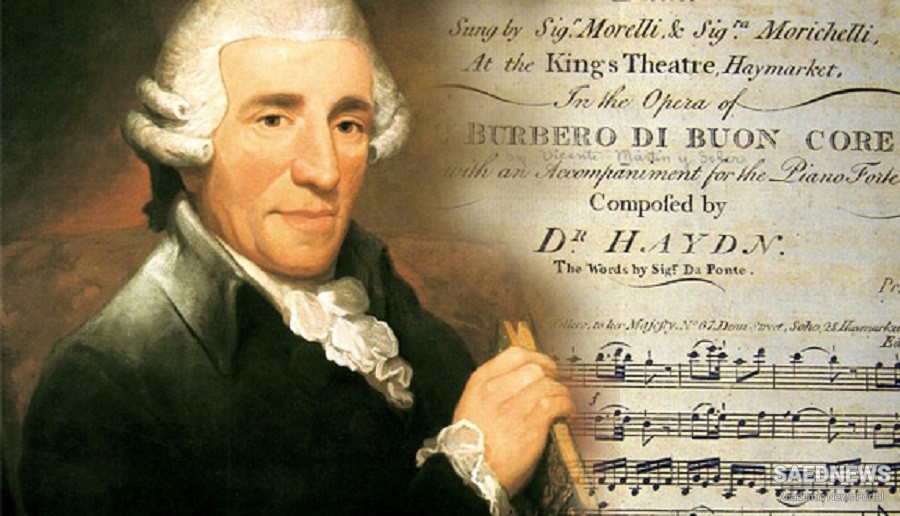When Prince Miklós died in 1790, he was succeeded by his son, Prince Antal, who did not care for music and dismissed most of the court musicians. Haydn was retained, however, and continued to receive his salary. At this point a violinist and concert manager, Johann Peter Salomon, arrived from England and commissioned from Haydn 6 new symphonies and 20 smaller compositions to be conducted by the composer himself in a series of orchestral concerts in London. Haydn gladly accepted this offer, and the two men set off for London in December 1790. On New Year’s Day 1791, Haydn arrived in England, and the following 18 months proved extremely rewarding. The 12 symphonies he wrote on his first and second visits to London represent the climax of his orchestral output. Their style and wit endeared the works to British audiences, and their popularity is reflected in the various nicknames bestowed on them—e.g., The Surprise (No. 94), Military (No. 100), The Clock (No. 101), and Drumroll (No. 103). In June 1792 Haydn left London, ultimately for Vienna, where his return was only coolly received. This perhaps prompted him to make a second journey to England in January 1794. The principal compositions of his second visit to London were the second set of London (or Salomon) symphonies (Nos. 99–104) and the six Apponyi quartets (Nos. 54–59). While in London, Haydn reached even greater heights of inspiration, particularly in the last three symphonies he wrote (Nos. 102–104), of which the Symphony No. 102 in B-flat Major is especially impressive. Although King George III invited him to stay in England, Haydn returned to his native Austria to serve the new head of the Esterházy family, Prince Miklós II. While in London in 1791, Haydn had been deeply moved by the performance of George Frideric Handel’s masterly oratorios. Deciding to compose further works in this genre, he obtained a suitable libretto, and, after settling in Vienna and resuming his duties for Prince Esterházy, he started work on the oratorio The Creation, the text of which had been translated into German by Baron Gottfried van Swieten. The work was planned and executed to enable performances in either German or English; it is believed to be the first musical work published with text underlay in two languages. The libretto was based on the epic poem Paradise Lost by John Milton and on the Genesis book of the Bible. The Creation was first publicly performed in 1798 and earned enormous popularity subsequently. Haydn then produced another oratorio, which absorbed him until 1801. An extended poem, The Seasons, by James Thomson, was chosen as the basis for the (much shorter) libretto, again adapted and translated by van Swieten so as to enable performance in either German or English. The oratorio achieved much success, both at the Austrian court and in public performances (although not in London). Haydn’s late creative output included six masses written for his patron Miklós II. He also continued to compose string quartets, notably the six Erdödy quartets known as Opus 76. In 1797 Haydn gave to the Austrian Empire the stirring song Gott erhalte Franz den Kaiser (“God Save Emperor Francis”). It was used for more than a century as the national anthem of the Austrian monarchy and as the patriotic song “Deutschland, Deutschland über alles” (“Germany, Germany Above All Else”) in Germany, where it remains the national anthem as “Deutschlandlied.” The song was so beloved that Haydn decided to use it as a theme for variations in one of his finest string quartets, the Emperor Quartet (Opus 76, No. 3). After composing his last two masses in 1801 and 1802, Haydn undertook no more large-scale works. During the last years of his life, he was apparently incapable of further work. In 1809 Napoleon’s forces besieged Vienna and in May entered the city. Haydn refused to leave his house and take refuge in the inner city. Napoleon placed a guard of honour outside Haydn’s house, and on May 31 the enfeebled composer died peacefully; he was buried two days later.


 Joseph Hayden and Classic Style of Music
Joseph Hayden and Classic Style of Music














































